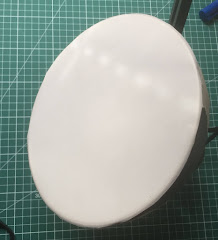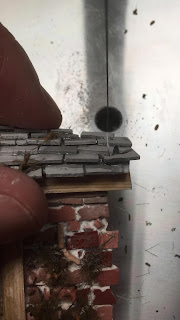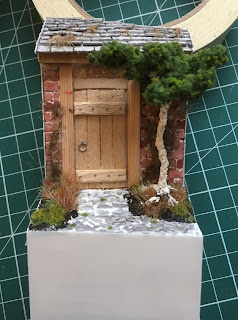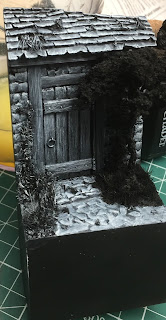Hello everyone,
Andi here! Remember me? I am the new monkey in the jungle!
Today I want to show you a step-by-step for a small scene I did earlier this year.
Everything started with a miniature exchange with my good hobby-friend Christoph. I had a bit of post-MV astronauts challenge blues and no sense for painting, so it was a good chance to spark new creative energies. We decided to send each other a secret miniature to be painted by the other, with minimal restrictions for the scene and painting. I received the beautiful Necromanceress from Ilyad Games. It’s a relatively rare, out-of-production miniature and I was a bit afraid whether I would be able to paint her in a way Christoph would like in the end.
Christoph's only request was to use a fantasy setting to match his Ilayd collection. Well, I’m not too much into fantasy, so it was a good challenge, which kicked me out of the comfort zone.
I started, like many times, with no idea how to start the project. Sounds pretty silly but it’s true ;)… but there are always tiny things I want to try. For years I have wanted to build a wooden door and had no proper project to implement one - this was my chance.
Measuring the height of the miniature, some calculations and cutting some wooden ice-sticks was pretty much everything I had to do. I attached everything with superglue, added some thin metal wire pieces as door handle and bolts and gently used a steel brush to create the wooden structured surface.
This was a good start, but not a base at all, so I glued the door to a piece of plasticard, created a frame for the door and some basic wooden structure. Again, the steel brush is a good tool for recreating the wood grain.
The free space was filled with Juweela stones, gaps were closed with Vallejo plastic putty and I did a first test on the base. With the wall and door in the background, the story of a zombie huntress, taking her bounty out of the house, developed in my head. At this point I was fully emerged in the project and the base building process began to flow easily .
To get a bit of extra height, I added some cork, filled the floor with chunks of Juweela plaster and used the same plaster to build the roof.
To get some life to the scene, potting soil and miniature plants have been added but it still looked a bit empty so I decided to add a tree. Sometimes I heard Bob Ross in my head saying „some bushes here and a happy little tree there“ :D
The tree was done with Vallejo plastic putty over a wire base and moss for the leaves/treetop.



I used my electrical scroll saw to get clean base edges and covered the whole base with plasticard. Basing work done.
After priming the whole scene with black airbrush primer, I was stuck again.
How to approach the painting??
Thinking about atmosphere, daylight or nighttime, muted neutral colors or bright comic colors… comic colors… comic... sin city part one, the lady with the red dress… and BAM, there was the inspiration for the color scheme.
And again, once I had the idea in my mind of the overall “feel” of the scene, everything went easy. In total it took about 4-5h to paint the whole scene with grisaille technique. I learned this at Roman's material masterclass workshop - which I highly recommend (some unpaid advertisement here *cough* ;) ).
The last step in the painting was the candy red dress popping out of the whole scene, which was glazed over the black-and-white grisaille with Schmincke AeroColor Brillant Red. still WIP but nearly finished
At the beginning of the painting process, I had no idea whether I would be able to handle the black and white scheme and how it would work with the red focus spot... but when he received it, Christoph was pretty happy, and that’s the most important part of the whole project. Thanks my friend for this opportunity;)
If you like the SBS, the result, or if you have any question, please leave a comment below.
Thanks for reading!
Cheers
Andy









































